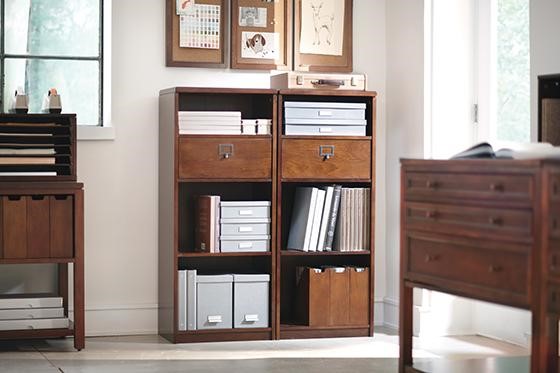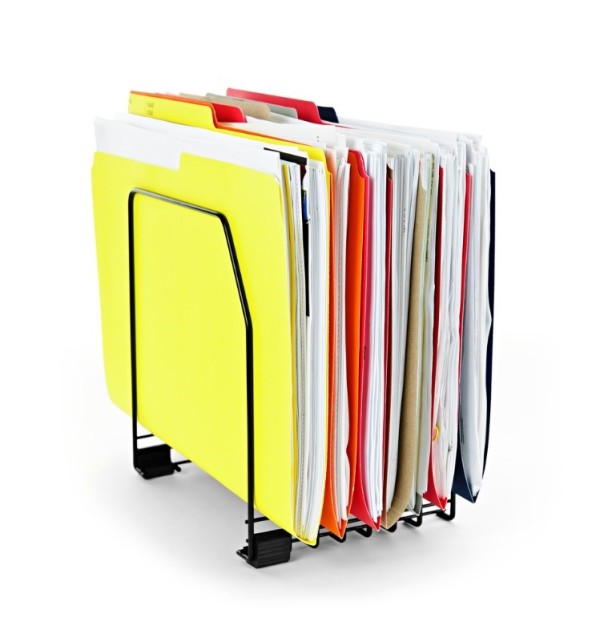By Lea Schneider
There’s a rule for getting your office organized that says to only leave out the things you are currently working on.
That rule of thumb might work for someone, but for most of us, it would result in total chaos. If you are like me and deal with multiple projects or clients at one time, it doesn’t take but a day or two before the best case scenario has the top of your desk completely covered. The worst case scenario is missing deadlines, losing money and clients disappearing because of disorganization.
Even with the newest app for task and time management, you still need some old-school tips for managing materials and papers for multiple projects. Piling them all on your desk only leads to them spilling over onto the floor, the credenza and adjacent chairs. Corralling them takes a trick or two. Here are four ways to start taming the chaos.
- Create a “Waiting Room”

Imagine you are a physician and you need to see a lot of patients today. You open the door to your exam room to see the nurse has placed 40 patients in that tiny space. You need to get to work right away. Wouldn’t that be impossible?
Yet that’s very similar to something that happens over and over again in offices. You need to get to work and in your tiny workspace, you’ve crammed 40 projects, all begging to be seen. Each one seems to overshadow and crowd out the other.
Take a hint from the physician’s office and create a “waiting room.” You can only view one patient at a time. In your case, that means focusing on one project and sending the rest into a designated waiting area. In your office, a bookcase behind or adjacent to your desk makes the perfect project management space.
Active projects can still be front and center, lined up on your bookcase. You’ll be able to easily access materials as you move from client to client. There is less chance of losing important pieces of these puzzles, because the components of each project are stored together, rather than strewn about your office.
- Go Vertical

Create a more open workspace and reduce visual clutter by going vertical. Instead of stacking and piling papers or files that represent tasks you need to do, set them in a vertical file. It’s much easier to access and return a file to the rack rather than dig through a messy pile. There are also a couple of added bonuses. First, it looks much better visually. Second, a vertical file is much easier to prioritize. Take a moment at the start of the day to line up tasks in order of importance. If you need to shuffle something to the front, it will be easy to find.
- Get Storage

Make some permanent storage decisions and buy great containers. On your “waiting room” bookshelf, add professional-looking storage containers to hold active projects. Choose bins, cubbies or document containers that can hold the typical components of your work. If you have lots of product samples, blueprints or reams of files on hand, choose storage that can adequately hold everything you need. Be sure to get labels that are easily changed as projects move to completion and new ones arise. Move finished projects into file cabinets or box them for storage.
- Use Visual Cues

Make use of your wall space. Whiteboards are great for listing deadlines for important things like submitting bids, upcoming dates or tracking a list of tasks. Corkboards can be used to pin up reminders and arrange a variety of materials from color swatches to photos. Glass windows or office dividers are perfect for collecting ideas and brainstorming with sticky notes. Use them for creating to-do lists or flow charts. The important thing is to move things from desk clutter to visual cues that will really spark your imagination or remind you to act in a timely manner.
Why Get Organized?
Creating an organized approach to all of the paper and samples for handling multiple projects has many benefits:
- Less visual clutter means less stress. You’ll be more likely to really focus on the task at hand when you are not so distracted.
- You’ll be less likely to lose parts or pieces of a project if you’ve created a container system to hold everything together.
- Co-workers and employees will be better equipped to help you and help clients when they can find everything they need.
The more organized you appear, the more organized you become. This results in you and your employees being more efficient and productive. The time you spend getting organized will pay for itself over and over again.
Professional organizing expert Lea Schneider writes for Home Depot on topics of interest to small business professionals. Lea draws from her own experience running a small business, combined with her professional organizer expertise, to present her ideas. For more inspiration on bookcases and shelves to better organize yourself, you can visit Home Decorators’ website here.







